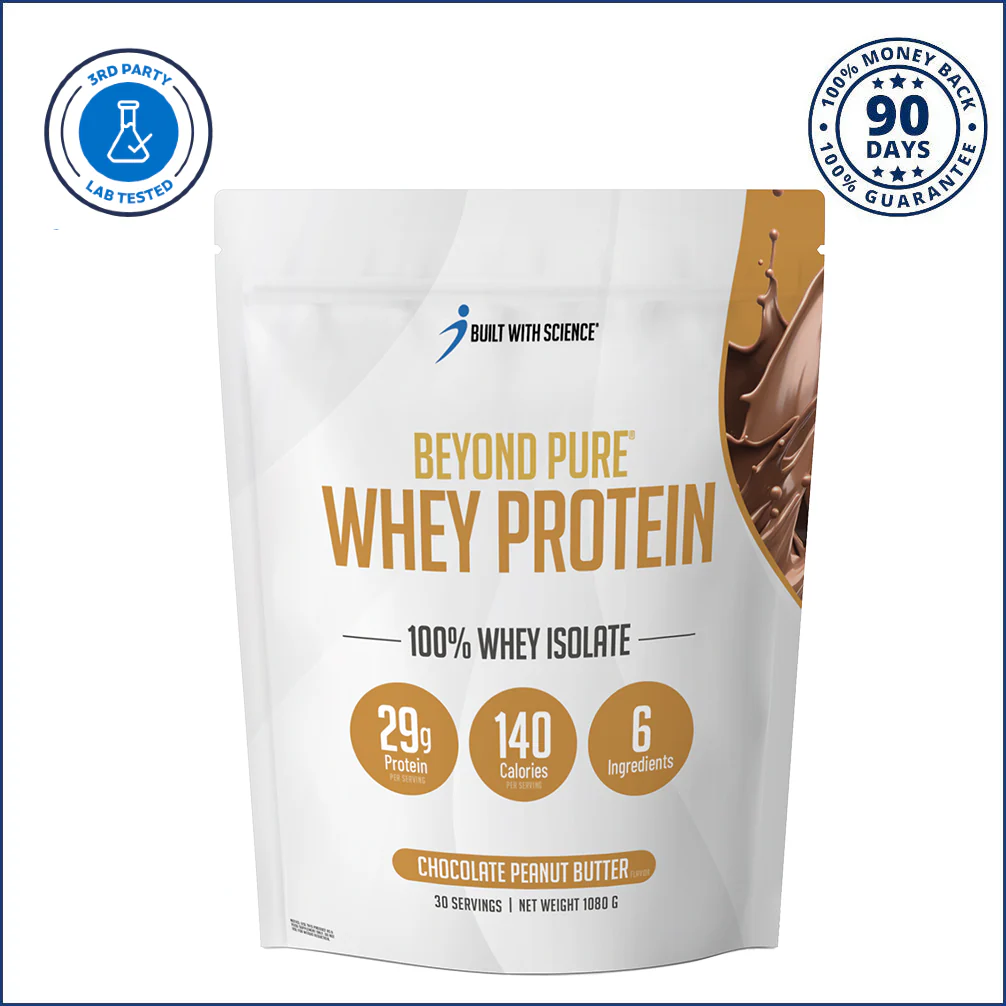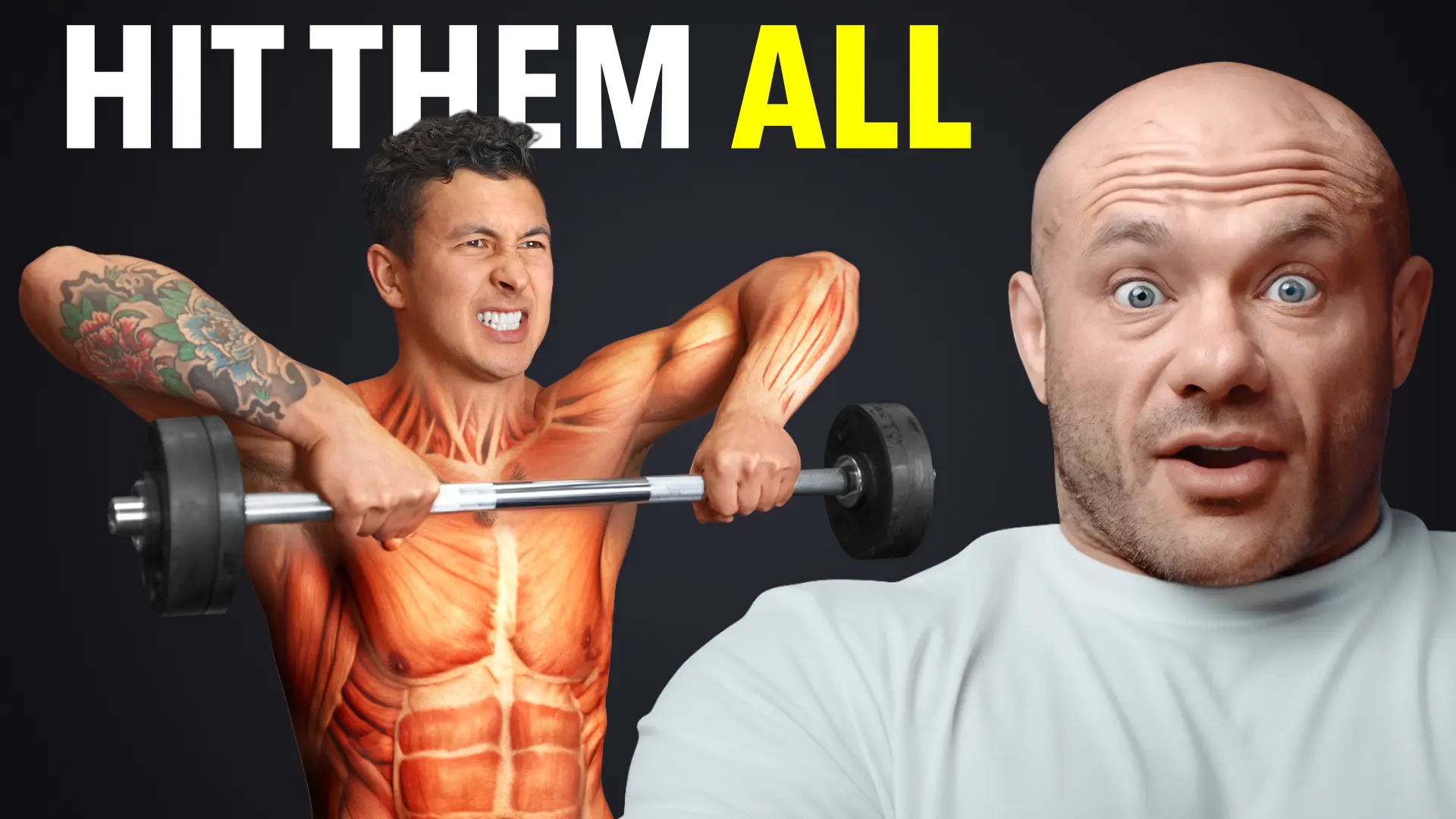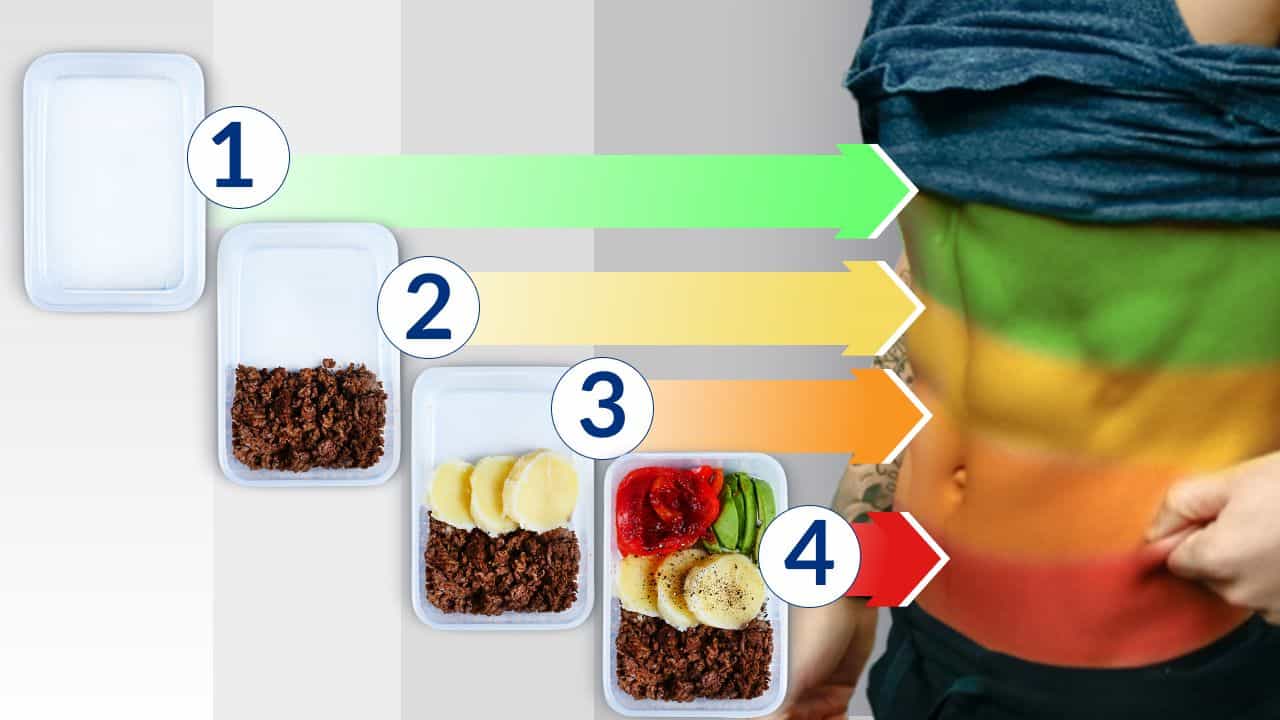
The Perfect Weight Loss Meal Plan To Get Lean (4 Steps)
Frustrated with unhelpful, low-calorie, non-nutritious fat loss diet plans out there? Say no more. In this article, I guide you through the simple 4-step process of creating your very own weight loss diet plan you can actually stick to.
In 4 easy steps, you’ll have a custom weight loss meal plan made specifically for your body and your taste buds. Here's what we're going to do in each step:
- Figure out your calorie goals
- Figure out your protein goals
- Determine how many meals you should have
- Fill in each of the above meals with specific foods
By the end of this article, you'll have a system you can use to build countless, different meal plans you can actually stick to.
By the way: these are precisely the things you'll learn in our Built With Science Programs. Only, you'll get access to much more guidance than this - including a 'plug-and-play' nutrition software that automates the whole process coming up with a personalized weight loss meal plan that works for you. That's why thousands of our members have successfully managed to lose fat (thanks to their very own, personalized meal plan). If you'd like to be one of them:
Click the button below to take my analysis quiz to discover the best program for you:
↓
Why Most Weight Loss Meal Plans Don't Work
In theory, weight loss meal plans sound great. But I remember stumbling across one on an online fitness forum back in the day. It involved eating the same 4 bland, boring, lifeless meals every day - for weeks on end - to lose fat.
Now, don’t get me wrong. I had a lot of willpower and I could put up with the lack of variety in the meals. But what I could not put up with was the fact that all this work and suffering didn’t even get me any results! It wasn’t until a lot of trial and error did I learn why this was. And it came down to 2 reasons.
Reason 1: Built Around 'Healthy', But Calorie-Dense Foods
The first reason has to do with the “healthy” breakfast of:
- Eggs
- Avocado toast
- Banana
- Peanut butter
At first glance, it’s a meal most would think is great for losing fat. But, would you guess that this alone racks up to over 1,000 calories? These foods are by no means “bad". But the truth is they can easily take you out of a calorie deficit. It’s the reason why the meal plan I used back in the day never ended up working. And is also why you need to be aware of roughly how many calories you’re consuming with any meal plan - as it can add up quickly.
Reason 2: Strict Meal Plans Are Unsustainable
The second reason why most weight loss meal plans don't work is that they often expect you to eat the same bland meals day in and day out. Showcasing the dangers of reason 2 is a group of resistance-trained males and females from a recent 2021 study, who, like me, followed a strict meal plan for 10 weeks.
Their weight loss meal plans consisted of 4 meals. And the participants were instructed to only eat foods that were included in their specific meal plan. They were not allowed to make any food substitutions. At all.
Throughout the 10 weeks, the participants were able to successfully lose about 7 lbs of fat. Sounds impressive? Well, the unfortunate thing is that the participants regained much of that as soon as they went off their meal plan after the study was over.
In other words: if a calorie deficit is achieved with a strict meal plan, then it will work in the short term. But not necessarily in the long term. That's why a good weight loss meal plan (like what we're covering today!) should be:
- Personalized to your body and your taste buds AND
- Set up in a flexible way for both short term and long term success
As we go through the article, you’ll also want to download a free copy of the weight loss meal plan builder we’ve created for you. With it, you’ll be able to easily create endless custom meal plans based on your body. To download it:
Click the button below to download your free weight loss meal plan PDF:
↓
Step 1: Setting Your Weight Loss Meal Plan Calories
The first step is the most important step if we want the meal plan to actually work. There’s no point adding any foods into our plan if we don’t yet know how many calories you can eat to lose fat. Now, most calorie calculators out there are shots in the dark. They don’t consider:
- How much muscle you have
- How much you move everyday
- Whether you lift weights or not
- Your age, gender, and height
These factors all affect how many calories you burn every day.
But not to worry. The method we’ll use involves just a few simple steps that will take all of these factors into account. And will be the easiest way for you to accurately determine the calorie target for your meal plan.
To save you from the boring math, we’ve automated these calculations for you into the meal plan builder we created for you to download. Within just a few minutes of using it, you’ll have your goal calories calculated for you.
Step 2: Determining Protein Intake
After calories, the next most important component of your weight loss meal plan is how much protein it contains. We want to include enough protein to be able to maintain your muscle as you lose fat. Eat too little protein, and you'll risk losing muscle.
How much is just right, though? The answer can be found in this 2018 meta-analysis, which combined almost 50 different protein studies. It found the 'sweet spot' to be around 0.8 to 1 grams per pound of body weight.
Whether you shoot for the lower end or higher end of this range, however, will depend on your body fat. Those with more body fat will require less protein.
We've automated this calculation for you in the meal plan builder you can download. Most of you will end up with a goal of 1 gram per pound of your body weight. For example, a goal of 180 grams of protein if you weighed 180 lbs.
Once you have that number, all we have to do before we fill your weight loss meal plan with foods is to determine how many meals you should be eating.
Step 3: Determining Number Of Daily Meals
The number of meals you eat daily will, in turn, determine:
- How many calories AND
- How much protein
... will be contained in each meal. Although eating more frequently is commonly thought to 'boost' your metabolism, this has been disproven.
That said, protein frequency does seem to be important in minimizing the risk of muscle loss as you lose fat. There's an ideal range you'll want to stick within. This seems to be between roughly 3 to 6 high-protein meals per day, with each separated by a few hours.
This is where personal preference is key. Do you prefer eating more food in less frequent meals? Or do you order eating less food - but more frequently? Whatever you pick should:
- Best suit your schedule AND
- Keep you full and energized throughout the day
Once you've picked the number of meals you'd like to eat, divide your protein intake up evenly across the number of meals. For example, let's say your daily goal is to consume 180 grams of protein. And you prefer to eat 5 meals a day. Then, you'd aim to have roughly 35 grams of protein in each meal.
Step 4: Filling In Your Weight Loss Meal Plan
Now, it's time for the fun part. Filling in your weight loss meal plan!. At this point, some of you may be wondering, "What about carbs and fats? How much of those should I eat?"
That is a good question. Numerous studies have compared the effects between:
- High carb diets (more rice, potatoes, and bread) but less fats (like oils, butters, and cheese) VERSUS
- Low carb diets with more fats
As it turns out, as long as both calories and protein were the same, there were no significant differences in fat loss.
Because of that, I prefer not complicating things by having you worry about eating specific amounts of carbs and fats. Instead, we're going to keep things simple and easy by providing you with 3 lists of protein, carbs, and fats to use to fill up your weight loss meal plan as you wish.
The foods in these lists are the lowest calorie density options available. And they will also be highly effective at keeping you full.
Here are the options and visual demonstrations of what 100 calories of various protein sources look like. You'll use these to reach your daily protein target. By the way: we’ve also added vegetarian and vegan protein options to this list in the downloadable meal plan builder.
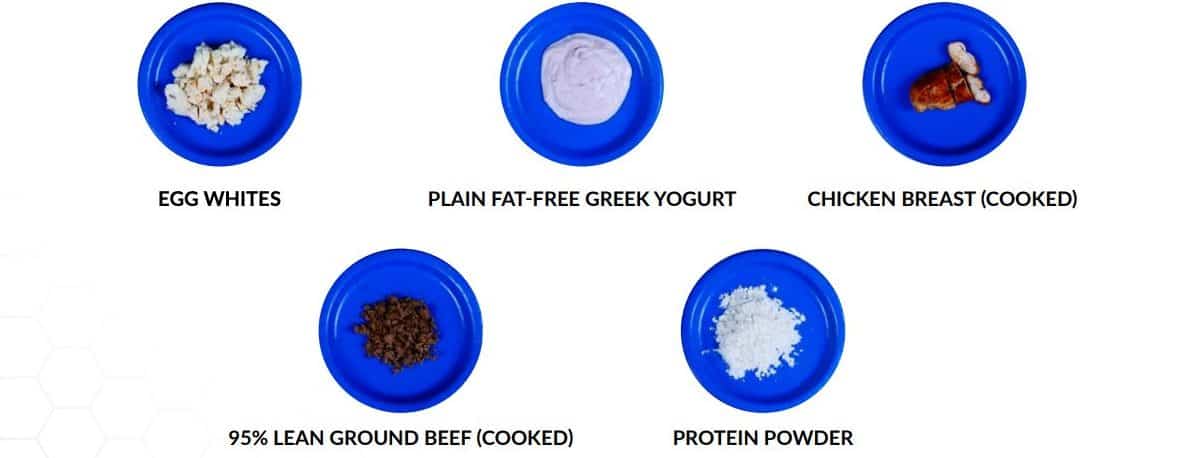
Here’s the same for common carb sources.
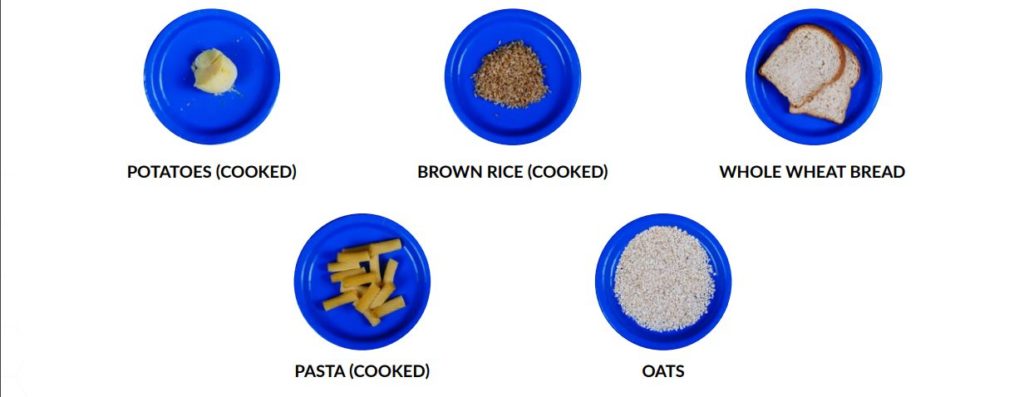
Here’s the same for various fruits and veggies. You can see how much more volume you get with fruits and vegetables. And why they’re a great way to keep you full when dieting.
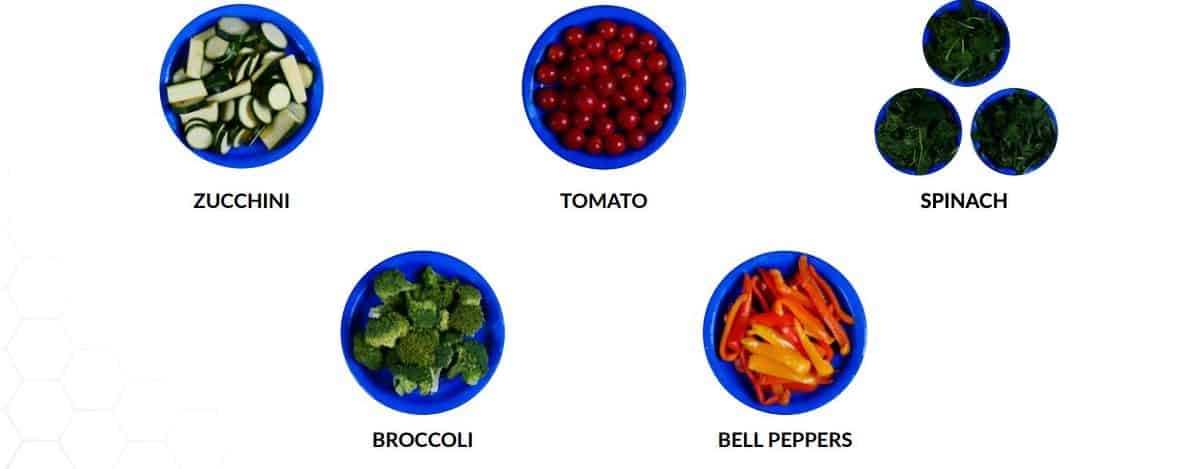
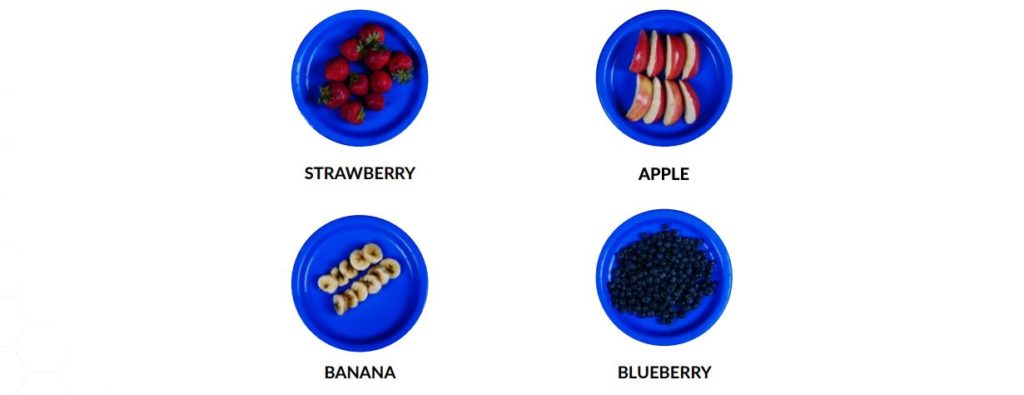
Here’s fats. You'll want to be mindful of these just because of how quickly their calories can add up.
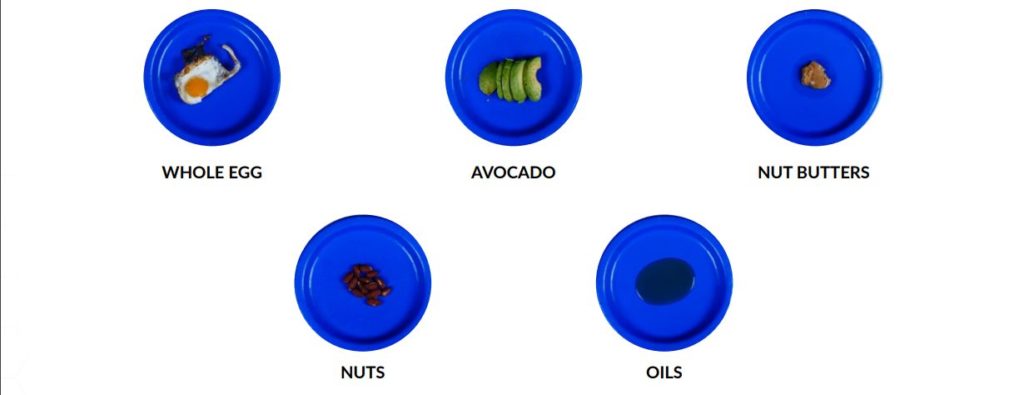
And finally, here’s a handful of low-calorie condiments you can use to spice up your meals. Seasonings and salt can be added as you prefer as well. Feel free to add your own items to these lists as well.
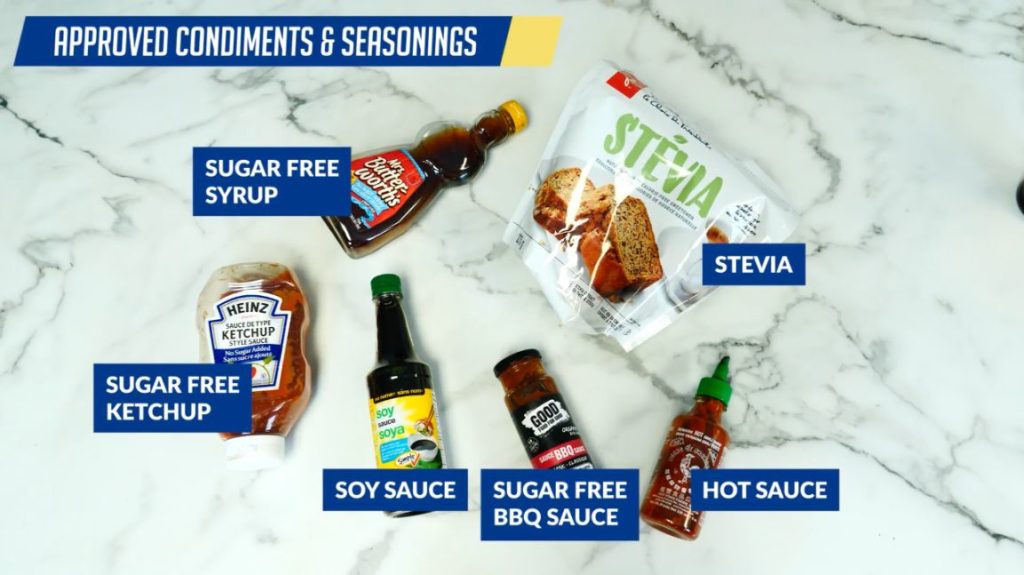
It's worth acknowledging that these food options may not be suitable for you because of your dietary preferences. But don't worry! That's where BWS programs come in - every purchase unlocks access to our specially-developed 'plug-and-play' nutrition software, capable of catering to all dietary needs. To find out more:
Click the button below to take my analysis quiz to discover the best program for you:
↓
Time To Create Your Weight Loss Meal Plan
How do you apply all that to create a meal plan designed to help you lose weight? Easy.
At each meal, select the foods from each category that you want to eat. Make sure to adjust the portions so that, by the end of the day, you get close to your calorie and protein goal by at least within about 10%.
So, using our previous example, let's say that your:
- Calorie goal: 1,900 calories
- Protein goal: 180 grams
- Number of meals a day: 5 high protein meals
Jot down roughly the times you'd plan to have these meals.
Applying Everything You've Learned
Then, start with protein. In this case, you'd want to try to split up the 180 grams of protein fairly evenly over each meal and snack. That would amount to around 35ish grams of protein in each. Pick from the list of protein sources - and plug them into each meal accordingly. The carbs and fats you add in next will also contain some protein, so don't worry if you're about 10-20 grams short of your protein goal after this step.
After you've selected a protein source for each meal, pick a carb source.
If you're going to be working out, generally, you want to make sure you include a carb source in the meal before your workout. Other than this, though, if there's a meal you'd want to exclude carbs from, then that's perfectly fine.
After this, then go ahead and pick your fat sources.
Most people do best when they exclude this category from their pre-workout meal to avoid feeling too full during the workout. But it’s totally up to you.
Next, based on your preference, pick a vegetable and a fruit to add. These will be the most filling foods relative to their calories, so I’d recommend including at least one in each meal.
Finally, add your favorite low-calorie condiments and preferred seasonings. Throw in a little bit of your inner chef into each meal. And you'll have a fat loss diet plan that's:
- Designed specifically for your body AND
- Filled with meals you actually enjoy
You'll also be left with the knowledge and resources to change up your meals however and whenever you wish!
Takeaway (Grab Your Weight Loss Meal Plan PDF Here!)
And once again, to download the free custom weight loss meal plan builder we made for you:
To download your FREE weight loss meal plan PDF:
Click the button below to download your free weight loss meal plan PDF:
↓
But realize guys that nutrition is hands down the most important part of getting lean.
That’s why, within our Built With Science programs, we remove the guesswork from your plan and show you exactly how to train AND how to eat in order to burn off unwanted fat. To get started today:
Click the button below to take my analysis quiz to discover the best program for you:
↓
Hope you enjoyed this one! Also, feel free to explore my past diet-related articles as well:
- How To Lose Belly Fat For Good (4 Week Plan)
- How To Lose Fat Faster By Eating Twice As Much
- High-Protein Breakfast Ideas To Lose Fat

